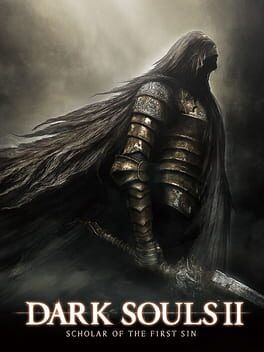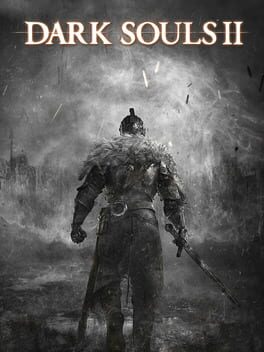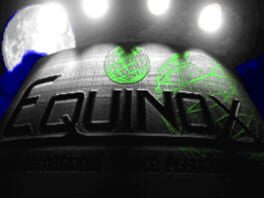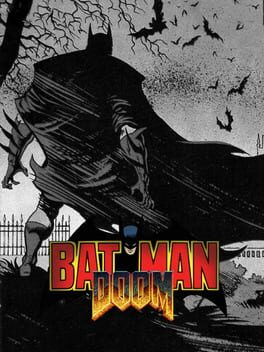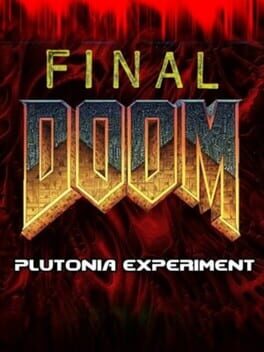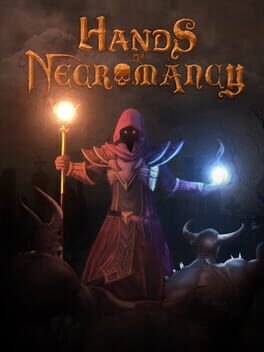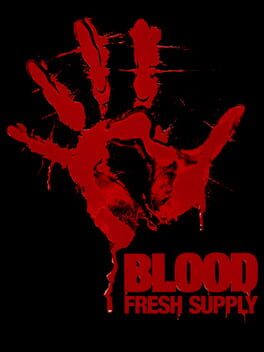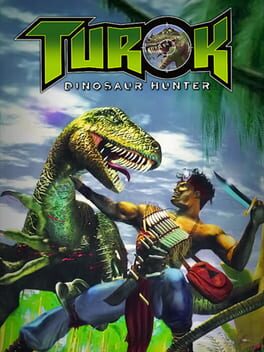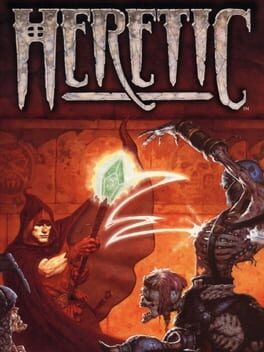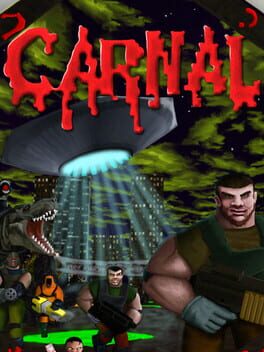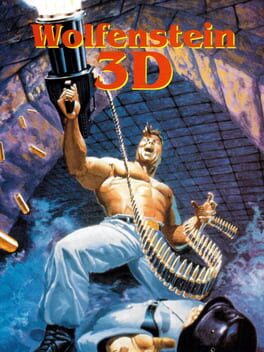Tin_Cake
I've copied my DSII review below, but I'll start by addressing what SotFS adds to the game.
tl;dr this game does a ton well, and if you like other FromSoft souls entries, you owe it to yourself to try this one out, understanding that you need to play it differently than the others, especially compared to the far faster-paced Bloodborne and DS3. SotFS doubles down on the difficulty and the intentionality of pace, but fleshes out the story even further while adding some incredible new late-game areas in the form of its expansions.
SotFS takes a great experience and makes it that much more outstanding. The three bespoke stories and areas added via the three expansions are some of the best and most engaging stories told across any of the Souls games. As with the expansions for every Souls game, the new bosses are some of the best bosses you'll find in DSII. The main-game additions to the plot including the new characters and new ending are also some of the most interesting plot points you'll find in any of these games. They are antithetical to DS2's original themes but are engaging all the same.
SotFS takes the enemy density and difficulty and ramps it up further, which truly feels like a deliberate reaction to folks complaining about it when DS2 first released. Now, folks who haven't yet adapted to DS2's more methodical and slow approach to combat will be completely and utterly overwhelmed. As I stated before, if you play this game like you played BB or DS3, you're gonna have an even worse time.
Elephant in the room - each DLC area has optional sections that are intended for co-op, and are purposefully far more difficult because of this. These are the areas you'll hear folks complain about the most, out of any section of any game from this series. Don't get me wrong, they are not really fun for a solo player, but I wanted to provide the context of them being optional and intended for two players, because most people who choose to dump on this game will ignore that facet of it.
The rest of this review is from my review on the vanilla DS2 release.
It bugs me when folks tank this entry's review scores because it's not as strong as DS1 or DS3. On paper, sure, fine, this is weakest entry into the Dark Souls series, but I posit that it's still a phenomenal game, one of the best in its generation. It's like saying it's the slowest runner in an Olympic race. Sure, it's not as good as what it's being compared against, but it doesn't change the fact that it's still a nearly-best-in-class experience.
If you played Elden Ring, DS3, or Bloodborne first, and then you go back and attempt to play this game the exact same way you played those games, you're going to have a bad time. Much like the bad time that many folks (myself included) likely had when jumping from DS2 to Bloodborne back in 2015!
This game requires slower, more methodical playing than DS3 or BB. It is not too much different than DS1 in that regard, though it does feel weightier unless you really deliberately spec into light weapons. Not a good or bad thing, just an observation. You cannot pull a dozen enemies and expect to be able to handle them all at once. This game places a lot more enemies in deliberate chokepoints, and punishes you for rushing. Combine that with the generally slower gameplay, and it's easy to feel overwhelmed by faster-moving, harder-hitting enemies because you can't be bothered to take your time. Take it slow, play intelligently, and you'll be fine.
Healing in this game is very different than any other Souls game, but it is the very best form of healing that we got out of any souls game in my opinion. Taking a drink of Estus takes ages, but if you have the time to pull it off, it's the fastest way to heal (and it's "free" in that it recharges at bonfires). On the flipside, lifegems activate a lot more quickly, but take longer to kick in, BUT you can carry far more of them, and continue to pick them up / refill them between bonfires. It's the best of both worlds - the grass/vial approach from BB and Demon's Souls in the lifegem, and the flask approach from the other DS entries and Elden Ring. You get both, but you have to use them intelligently.
Inevitably, you'll hear people complain about the disconnected levels in this game, like the famous "elevator up a windmill into a volcano." No doubt, DS1, ER and Bloodborne spoil us in these regards (DS3 to a lesser extent - it's a lot more linear and I'm not sure why folks laud it as some great feat in level design). I won't argue that these other entries do it better; my response is instead to ask "why does that matter?" It certainly should be considered a point of praise for the other entries, but it shouldn't be used to condemn this game. Very few games of this scope do anything like what was pulled off in DS1's level design. It should be considered the exception, not the rule. I'm not defending DS2's level design - the interconnectivity is demonstrably worse than the other entries - but I'm instead saying that it missing this aspect shouldn't be a slight against it, but rather a feather in the cap of the other entries.
Folks also love to hate on the health bar dropping as you die, without realizing it's the exact same mechanic as the other souls games, it just looks different. In DS1 and DS3, your hollowed/un-embered form has less HP, and when you use a humanity or an ember, your HP increases. The exact same thing happens in DS2, the devs just chose to keep your "human" HP bar visible and grayed out. If your embered/human HP bar was visible in DS1 and DS3, and simply grayed out when you were hollow/unembered, there would be no difference at all. I understand that it feels like less HP because of that, but the game is balanced around a hollow HP bar, while the human health bar is a nice boost, just like DS1 and 3. Plus, unlike DS1 & 3, the bar actually drops slowly instead of all at once, so it's more forgiving than either of those entries.
The weapon variety is unmatched in DS2, though the weapon leveling is more tedious for sure (Bloodborne nailed this IMO, not sure why they don't just stick with that formula).
The bosses that land, land really well, but there are several that don't, just like every entry into the series. There are more weak bosses in this entry, but there are also more bosses in general, so it's kind of a moot point.
The entire DS series is about the endless, inevitably cyclical nature of dark vs. light, and this game's storyline is an encapsulation of that. For the folks saying the story has no meaningful beats and that it feels tedious or pointless, congratulations! You effectively analyzed the point of the story.
tl;dr this game does a ton well, and if you like other FromSoft souls entries, you owe it to yourself to try this one out, understanding that you need to play it differently than the others, especially compared to the far faster-paced Bloodborne and DS3. SotFS doubles down on the difficulty and the intentionality of pace, but fleshes out the story even further while adding some incredible new late-game areas in the form of its expansions.
SotFS takes a great experience and makes it that much more outstanding. The three bespoke stories and areas added via the three expansions are some of the best and most engaging stories told across any of the Souls games. As with the expansions for every Souls game, the new bosses are some of the best bosses you'll find in DSII. The main-game additions to the plot including the new characters and new ending are also some of the most interesting plot points you'll find in any of these games. They are antithetical to DS2's original themes but are engaging all the same.
SotFS takes the enemy density and difficulty and ramps it up further, which truly feels like a deliberate reaction to folks complaining about it when DS2 first released. Now, folks who haven't yet adapted to DS2's more methodical and slow approach to combat will be completely and utterly overwhelmed. As I stated before, if you play this game like you played BB or DS3, you're gonna have an even worse time.
Elephant in the room - each DLC area has optional sections that are intended for co-op, and are purposefully far more difficult because of this. These are the areas you'll hear folks complain about the most, out of any section of any game from this series. Don't get me wrong, they are not really fun for a solo player, but I wanted to provide the context of them being optional and intended for two players, because most people who choose to dump on this game will ignore that facet of it.
The rest of this review is from my review on the vanilla DS2 release.
It bugs me when folks tank this entry's review scores because it's not as strong as DS1 or DS3. On paper, sure, fine, this is weakest entry into the Dark Souls series, but I posit that it's still a phenomenal game, one of the best in its generation. It's like saying it's the slowest runner in an Olympic race. Sure, it's not as good as what it's being compared against, but it doesn't change the fact that it's still a nearly-best-in-class experience.
If you played Elden Ring, DS3, or Bloodborne first, and then you go back and attempt to play this game the exact same way you played those games, you're going to have a bad time. Much like the bad time that many folks (myself included) likely had when jumping from DS2 to Bloodborne back in 2015!
This game requires slower, more methodical playing than DS3 or BB. It is not too much different than DS1 in that regard, though it does feel weightier unless you really deliberately spec into light weapons. Not a good or bad thing, just an observation. You cannot pull a dozen enemies and expect to be able to handle them all at once. This game places a lot more enemies in deliberate chokepoints, and punishes you for rushing. Combine that with the generally slower gameplay, and it's easy to feel overwhelmed by faster-moving, harder-hitting enemies because you can't be bothered to take your time. Take it slow, play intelligently, and you'll be fine.
Healing in this game is very different than any other Souls game, but it is the very best form of healing that we got out of any souls game in my opinion. Taking a drink of Estus takes ages, but if you have the time to pull it off, it's the fastest way to heal (and it's "free" in that it recharges at bonfires). On the flipside, lifegems activate a lot more quickly, but take longer to kick in, BUT you can carry far more of them, and continue to pick them up / refill them between bonfires. It's the best of both worlds - the grass/vial approach from BB and Demon's Souls in the lifegem, and the flask approach from the other DS entries and Elden Ring. You get both, but you have to use them intelligently.
Inevitably, you'll hear people complain about the disconnected levels in this game, like the famous "elevator up a windmill into a volcano." No doubt, DS1, ER and Bloodborne spoil us in these regards (DS3 to a lesser extent - it's a lot more linear and I'm not sure why folks laud it as some great feat in level design). I won't argue that these other entries do it better; my response is instead to ask "why does that matter?" It certainly should be considered a point of praise for the other entries, but it shouldn't be used to condemn this game. Very few games of this scope do anything like what was pulled off in DS1's level design. It should be considered the exception, not the rule. I'm not defending DS2's level design - the interconnectivity is demonstrably worse than the other entries - but I'm instead saying that it missing this aspect shouldn't be a slight against it, but rather a feather in the cap of the other entries.
Folks also love to hate on the health bar dropping as you die, without realizing it's the exact same mechanic as the other souls games, it just looks different. In DS1 and DS3, your hollowed/un-embered form has less HP, and when you use a humanity or an ember, your HP increases. The exact same thing happens in DS2, the devs just chose to keep your "human" HP bar visible and grayed out. If your embered/human HP bar was visible in DS1 and DS3, and simply grayed out when you were hollow/unembered, there would be no difference at all. I understand that it feels like less HP because of that, but the game is balanced around a hollow HP bar, while the human health bar is a nice boost, just like DS1 and 3. Plus, unlike DS1 & 3, the bar actually drops slowly instead of all at once, so it's more forgiving than either of those entries.
The weapon variety is unmatched in DS2, though the weapon leveling is more tedious for sure (Bloodborne nailed this IMO, not sure why they don't just stick with that formula).
The bosses that land, land really well, but there are several that don't, just like every entry into the series. There are more weak bosses in this entry, but there are also more bosses in general, so it's kind of a moot point.
The entire DS series is about the endless, inevitably cyclical nature of dark vs. light, and this game's storyline is an encapsulation of that. For the folks saying the story has no meaningful beats and that it feels tedious or pointless, congratulations! You effectively analyzed the point of the story.
2014
tl;dr this game does a ton well, and if you like other FromSoft souls entries, you owe it to yourself to try this one out, understanding that you need to play it differently than the others, especially compared to the far faster-paced Bloodborne and DS3.
It bugs me when folks tank this entry's review scores because it's not as strong as DS1 or DS3. On paper, sure, fine, this is weakest entry into the Dark Souls series, but I posit that it's still a phenomenal game, one of the best in its generation. It's like saying it's the slowest runner in an Olympic race. Sure, it's not as good as what it's being compared against, but it doesn't change the fact that it's still a nearly-best-in-class experience.
If you played Elden Ring, DS3, or Bloodborne first, and then you go back and attempt to play this game the exact same way you played those games, you're going to have a bad time. Much like the bad time that many folks (myself included) likely had when jumping from DS2 to Bloodborne back in 2015!
This game requires slower, more methodical playing than DS3 or BB. It is not too much different than DS1 in that regard, though it does feel weightier unless you really deliberately spec into light weapons. Not a good or bad thing, just an observation. You cannot pull a dozen enemies and expect to be able to handle them all at once. This game places a lot more enemies in deliberate chokepoints, and punishes you for rushing. Combine that with the generally slower gameplay, and it's easy to feel overwhelmed by faster-moving, harder-hitting enemies because you can't be bothered to take your time. Take it slow, play intelligently, and you'll be fine.
Healing in this game is very different than any other Souls game, but it is the very best form of healing that we got out of any souls game in my opinion. Taking a drink of Estus takes ages, but if you have the time to pull it off, it's the fastest way to heal (and it's "free" in that it recharges at bonfires). On the flipside, lifegems activate a lot more quickly, but take longer to kick in, BUT you can carry far more of them, and continue to pick them up / refill them between bonfires. It's the best of both worlds - the grass/vial approach from BB and Demon's Souls in the lifegem, and the flask approach from the other DS entries and Elden Ring. You get both, but you have to use them intelligently.
Inevitably, you'll hear people complain about the disconnected levels in this game, like the famous "elevator up a windmill into a volcano." No doubt, DS1, ER and Bloodborne spoil us in these regards (DS3 to a lesser extent - it's a lot more linear and I'm not sure why folks laud it as some great feat in level design). I won't argue that these other entries do it better; my response is instead to ask "why does that matter?" It certainly should be considered a point of praise for the other entries, but it shouldn't be used to condemn this game. Very few games of this scope do anything like what was pulled off in DS1's level design. It should be considered the exception, not the rule. I'm not defending DS2's level design - the interconnectivity is demonstrably worse than the other entries - but I'm instead saying that it missing this aspect shouldn't be a slight against it, but rather a feather in the cap of the other entries.
Folks also love to hate on the health bar dropping as you die, without realizing it's the exact same mechanic as the other souls games, it just looks different. In DS1 and DS3, your hollowed/un-embered form has less HP, and when you use a humanity or an ember, your HP increases. The exact same thing happens in DS2, the devs just chose to keep your "human" HP bar visible and grayed out. If your embered/human HP bar was visible in DS1 and DS3, and simply grayed out when you were hollow/unembered, there would be no difference at all. I understand that it feels like less HP because of that, but the game is balanced around a hollow HP bar, while the human health bar is a nice boost, just like DS1 and 3. Plus, unlike DS1 & 3, the bar actually drops slowly instead of all at once, so it's more forgiving than either of those entries.
The weapon variety is unmatched in DS2, though the weapon leveling is more tedious for sure (Bloodborne nailed this IMO, not sure why they don't just stick with that formula).
The bosses that land, land really well, but there are several that don't, just like every entry into the series. There are more weak bosses in this entry, but there are also more bosses in general, so it's kind of a moot point.
The entire DS series is about the endless, inevitably cyclical nature of dark vs. light, and this game's storyline is an encapsulation of that. For the folks saying the story has no meaningful beats and that it feels tedious or pointless, congratulations! You effectively analyzed the point of the story.
It bugs me when folks tank this entry's review scores because it's not as strong as DS1 or DS3. On paper, sure, fine, this is weakest entry into the Dark Souls series, but I posit that it's still a phenomenal game, one of the best in its generation. It's like saying it's the slowest runner in an Olympic race. Sure, it's not as good as what it's being compared against, but it doesn't change the fact that it's still a nearly-best-in-class experience.
If you played Elden Ring, DS3, or Bloodborne first, and then you go back and attempt to play this game the exact same way you played those games, you're going to have a bad time. Much like the bad time that many folks (myself included) likely had when jumping from DS2 to Bloodborne back in 2015!
This game requires slower, more methodical playing than DS3 or BB. It is not too much different than DS1 in that regard, though it does feel weightier unless you really deliberately spec into light weapons. Not a good or bad thing, just an observation. You cannot pull a dozen enemies and expect to be able to handle them all at once. This game places a lot more enemies in deliberate chokepoints, and punishes you for rushing. Combine that with the generally slower gameplay, and it's easy to feel overwhelmed by faster-moving, harder-hitting enemies because you can't be bothered to take your time. Take it slow, play intelligently, and you'll be fine.
Healing in this game is very different than any other Souls game, but it is the very best form of healing that we got out of any souls game in my opinion. Taking a drink of Estus takes ages, but if you have the time to pull it off, it's the fastest way to heal (and it's "free" in that it recharges at bonfires). On the flipside, lifegems activate a lot more quickly, but take longer to kick in, BUT you can carry far more of them, and continue to pick them up / refill them between bonfires. It's the best of both worlds - the grass/vial approach from BB and Demon's Souls in the lifegem, and the flask approach from the other DS entries and Elden Ring. You get both, but you have to use them intelligently.
Inevitably, you'll hear people complain about the disconnected levels in this game, like the famous "elevator up a windmill into a volcano." No doubt, DS1, ER and Bloodborne spoil us in these regards (DS3 to a lesser extent - it's a lot more linear and I'm not sure why folks laud it as some great feat in level design). I won't argue that these other entries do it better; my response is instead to ask "why does that matter?" It certainly should be considered a point of praise for the other entries, but it shouldn't be used to condemn this game. Very few games of this scope do anything like what was pulled off in DS1's level design. It should be considered the exception, not the rule. I'm not defending DS2's level design - the interconnectivity is demonstrably worse than the other entries - but I'm instead saying that it missing this aspect shouldn't be a slight against it, but rather a feather in the cap of the other entries.
Folks also love to hate on the health bar dropping as you die, without realizing it's the exact same mechanic as the other souls games, it just looks different. In DS1 and DS3, your hollowed/un-embered form has less HP, and when you use a humanity or an ember, your HP increases. The exact same thing happens in DS2, the devs just chose to keep your "human" HP bar visible and grayed out. If your embered/human HP bar was visible in DS1 and DS3, and simply grayed out when you were hollow/unembered, there would be no difference at all. I understand that it feels like less HP because of that, but the game is balanced around a hollow HP bar, while the human health bar is a nice boost, just like DS1 and 3. Plus, unlike DS1 & 3, the bar actually drops slowly instead of all at once, so it's more forgiving than either of those entries.
The weapon variety is unmatched in DS2, though the weapon leveling is more tedious for sure (Bloodborne nailed this IMO, not sure why they don't just stick with that formula).
The bosses that land, land really well, but there are several that don't, just like every entry into the series. There are more weak bosses in this entry, but there are also more bosses in general, so it's kind of a moot point.
The entire DS series is about the endless, inevitably cyclical nature of dark vs. light, and this game's storyline is an encapsulation of that. For the folks saying the story has no meaningful beats and that it feels tedious or pointless, congratulations! You effectively analyzed the point of the story.
2001
Shelved because I accidentally deleted my save when updating GZDOOM, but I figure it was a fine stopping point as well. Pretty good level pack! Good detail using lots of native textures and very large spanning levels without feeling too empty a la TNT. Genuinely tough in spots due to ammo scarcity, I had to get very comfortable using chainsaw in strategic spots, but it felt like an intentional design decision from the developers. Also a cool spin on the "hub world" approach with different events happening within it as the game goes on.
1999
Really interesting and incredibly detailed TCM that deserves the recognition. Longtime fans of Batman will definitely want to play it, and the additions to the gameplay (including full weapon overhauls, total art conversions and clever usage of pre-existing mechanics to overlay other weapons or enemies) are all fantastic. It runs and plays great once you get things set up correctly (which is unfortunately a problem in and of itself) but I used Crispy DOOM and a pre-built .bat for it and I had no issues once that was settled. I might go back and finish it, but at this point, I don't need 30-odd levels of it. I got through 2 "storylines" and part of the way through the third, clocking in around 10-11 missions, and am calling it good there. Very impressive to see what the modding team was able to do to this.
1998
Awesome, fast-paced level which was surprising given its massive size (~435 enemies on the difficulty I chose, with tons of sprawling open areas). Definitely had to be strategic in many places because chain gunners down long sight paths with no cover is terrifying, especially when rockets were extremely scarce. Also, 3-4 cyberdemons around the level on Ultra-violence, which was wild because there were no energy weapons in the level, you only had shotguns, pistol/chaingun, and rocket launcher to get through the whole ordeal. It was very much a rocket-rationing level which made it all the more hectic near the end when the enemy count and tier started rising drastically. A great example of large levels not necessarily equaling boring (or easy) in a DOOM game.
1995
Shelved it after about 10 levels. If this were designed for a solo player, I'd give it a 2/5, but given that it's 27 years old and was intended for co-op play, I'm calling it a 3 instead. There has been plenty of evolution since this point, and it shows. Difficulty-wise, I'd put the levels I played between TNT & Plutonia, but much closer to TNT.
1995
A solid effort considering that this is one of the earliest well-known Doom WADs. Clearly showing its age and nothing too mind-blowing, but cool to see some distinctly non-id flavored approaches to areas. It felt a little unfocused near the end, and I was confused by the last two areas. As far as I can tell, there was a non-functioning Icon of Sin in the second to last arena area? It was cool because it was a sort of map puzzle that brought the player around the Icon, but then you didn't actually have to fight it. Then, the very last arena felt like it was going to be bonkers from a size / setup perspective, but then only had a few Mancubi and Barons. It's not entirely fair for me to be this harsh, though - this came out before Plutonia and I feel like folks were on a different wavelength at that time. It's worth playing if only because it's a relatively short experience and gives perspective on the history of DOOM WADs.
This one is tough, but worth it. I'm sure a ton of WADs got their inspiration from the level of difficulty this one provided. Instead of big sprawling levels with a ton of low-level garbage on them (like its Final DOOM companion, TNT), Plutonia opted for tight, compact levels with interesting enemy placement and variety. A lot closer to the rhythm we got out of the modern games, wherein combat almost felt like more of a puzzle at times, but also wasn't afraid to turn it into a matter of reflex and punishment for sloppy playing. There were some absolutely bonkers levels, like... I think Twilight was the name of one? I have an extra save of it because it was insane, just no breathing room at all. And "Hunted" was great, nothing but Archviles teleported across a labyrinth. Clever and cool concepts, big fan and looking forward to others like it... as long as I actually have the skill and ability needed to play through them!
1996
I chose to play through the "official" WAD expansions to DOOM before diving off the deep end into the world of DOOM (and DOOM clone) WADs, starting with TNT: Evilution. In a vacuum, it's... fine, but knowing what I know about where modders and WAD creators have taken this engine, it's pretty disappointing.
Starting with the pros: for a 1996 expansion, there are definitely some cool upgrades / expanded use of the old engine in ways that were enjoyable to experience, and makes me excited for some of the bigger / more modern WADs on the horizon that I've yet to play.
Cons: most everything else. Even that pro I listed above is a bit of a cop-out, as the original Aliens: Eradication total conversion mod came out before TNT and showcases a lot more flexibility than TNT does. The levels are too long, far too drawn-out, and don't do anything revolutionary enough to be worth folks' time at this point. Please, if you are interested in diving into the world of DOOM WADs and you already own Final DOOM, by all means, play Plutonia (understanding that it's pretty damn hard), and then just jump headfirst into running DOOM with free level packs, of which there are literally thousands, many of which are far superior to this "official expansion."
Starting with the pros: for a 1996 expansion, there are definitely some cool upgrades / expanded use of the old engine in ways that were enjoyable to experience, and makes me excited for some of the bigger / more modern WADs on the horizon that I've yet to play.
Cons: most everything else. Even that pro I listed above is a bit of a cop-out, as the original Aliens: Eradication total conversion mod came out before TNT and showcases a lot more flexibility than TNT does. The levels are too long, far too drawn-out, and don't do anything revolutionary enough to be worth folks' time at this point. Please, if you are interested in diving into the world of DOOM WADs and you already own Final DOOM, by all means, play Plutonia (understanding that it's pretty damn hard), and then just jump headfirst into running DOOM with free level packs, of which there are literally thousands, many of which are far superior to this "official expansion."
2022
Shelved for now, but wanted to leave a review since I see that it doesn't have any yet. I'm pretty sure this was a solo developer effort, and I think it's a commendable homage to Heretic-style gameplay.
This plays a lot like Hexen (central hub-world that leads to different worlds which unlock various transformations which your character can use to access new areas, such as a snake that can breathe underwater and fit through very small openings). I definitely love this transformation aspect, and would be very interested to see where it went for the rest of the game, but the backtracking and level design is hard to swallow for the time being, as I also just wrapped up a Hexen playthrough and I'm tired of the formula for the time being.
Also of note is that, given that you play a necromancer in the game, I felt like the necromancy aspect of the game was a bit undercooked. Necromancy abilities were tied to consumable objects, like items in Heretic/Hexen, which was fine (I never ran out of them), but the level design did not encourage their use. When enemies are revived, they stayed in a very small area and didn't follow the player around. However, enemy placement in the levels I played was never terribly dense, so by the time I got around to using the necromancy power on a downed enemy, they might help take out one or two more enemies, then they'd shuffle around in place for the rest of my visit to the level. I'd recommend either building more "arena"-style areas with higher enemy density so it makes sense to take the time to raise the dead, or re-code raised followers to follow the player around (to the best of their ability). All in all, a great effort for a small dev team and I'm excited to see what the sequel brings to the table.
This plays a lot like Hexen (central hub-world that leads to different worlds which unlock various transformations which your character can use to access new areas, such as a snake that can breathe underwater and fit through very small openings). I definitely love this transformation aspect, and would be very interested to see where it went for the rest of the game, but the backtracking and level design is hard to swallow for the time being, as I also just wrapped up a Hexen playthrough and I'm tired of the formula for the time being.
Also of note is that, given that you play a necromancer in the game, I felt like the necromancy aspect of the game was a bit undercooked. Necromancy abilities were tied to consumable objects, like items in Heretic/Hexen, which was fine (I never ran out of them), but the level design did not encourage their use. When enemies are revived, they stayed in a very small area and didn't follow the player around. However, enemy placement in the levels I played was never terribly dense, so by the time I got around to using the necromancy power on a downed enemy, they might help take out one or two more enemies, then they'd shuffle around in place for the rest of my visit to the level. I'd recommend either building more "arena"-style areas with higher enemy density so it makes sense to take the time to raise the dead, or re-code raised followers to follow the player around (to the best of their ability). All in all, a great effort for a small dev team and I'm excited to see what the sequel brings to the table.
2019
Just a fantastic game. Might be one of my very favorite boomer shooters to date, if only for the atmosphere alone. It's not perfect, and some levels and episodes definitely dragged on. Some weapons felt useless and/or superfluous like the different types of dynamite and the lost soul thing (besides its secondary fire), but the weapons that do land, land oh-so-very well. As someone who hates using grenades in games, the dynamite has made me a convert, though I suppose it's partially because it almost feels more like a wind-up grenade launcher than it does a throwable. Save those earlier mentioned exceptions, every weapon was extremely fun to use, and felt like it had its place by the end of the game. Atmosphere and music was incredible. Enemy variety was enjoyable and mostly fair. I would still tone down the twitchiness of the cultists, especially the tommy-gun toting ones, because they were by far the reason I save-scummed the most. That said, the remake does have a custom difficulty option which allows you to adjust many aspects of the enemies, like their health pool and aggression levels. I'm sure enough tweaking would allow folks to enjoy the game however they want. I would love to see a DOOM 2016 treatment done to this franchise, and I'm excited to mess around more with any WADs / mods for it in the future.
Finally replayed the remake after 15 years, and I enjoyed it more than I remember as a child. Perhaps my tolerance for key-hunting has increased thanks to playing a bunch of Quake in the meantime. It's a lot shorter than I realized, probably closer to 8-10 hours of gameplay, and that's with some secret hunting for the hidden weapon. The gameplay, while very dated, was fun enough and there are definitely some quirks due to it releasing on N64 exclusively at first (IIRC?). Diagonal running is significantly faster and allows for longer jumps and sequence breaks which made things easier on me, but sometimes made it weird because I would break sequence without realizing I missed platforms that lead to other areas in a given level. Worth it overall, and I'm looking forward to trying out Nightdive's takes on the sequels as well.
1994
Doom with wizards. I can say that I enjoyed this experience more than Hexen, but I still like both takes for their own reasons. This played quite straight-ahead; it really did just feel like Doom with medieval flare. Generally good level design and nice enemy variety / placement throughout. Later levels started to slog a little bit simply due to lack of variety, but I'm sure that's also because I was blasting through it super quickly. If you want more Doom with a different coat of paint on it, this is a solid option.
2021
Felt kind of like a Euro-trash take on Quake, like a Dusk v0.5 or something. Not bad, not great. Some spots were overly challenging in a not-fun way. I appreciated the many references to older shooters, like food / healing items popping out of the weirdest environmental spots, and the carnival & ticket-taker a la Blood. Would recommend if you're dying for a boomer shooter fix and have played everything else, but if you're new to the genre, it'd be more worth your time figuring out how to boot up older games before picking this one up.
1992
Really cool to see how much things have changed since this. 4 stars given its place in history, though through a modern lens it'd be fair to give it a 2/5 or 3/5 given how repetitive it becomes and how bland the game is (though, again, it was mindblowing when it came out!). Only reason to play it at this point is for historical perspective, as the controls are a major pain to wrap your mind around. Still an enjoyable experience if you want to see where the FPS genre really took root.
